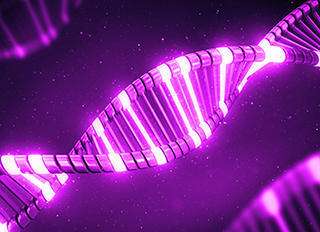Next-Gen Sequencing Maps 'Highly Degraded' DNA

Next-generation sequencing (NGS) technology can now profile highly damaged DNA samples that contain 75 percent less base-pair information, compared with previous systems. This is a significant improvement for law enforcement in cases involving missing persons or unidentified human remains.
San Diego-based sequencing company, Illumina, announced its MiSeq FGx system that the company hopes will help in “no suspect” cases, or lead to clues in cold ones. But even with its extraordinary potential, industry experts say NGS has an arduous road ahead finding mainstream acceptance.
“We have worked with collaborators, and in particular, used bone samples that have results from capillary electrophoresis (CE) based systems, with only partial results,” Illumina senior market manager Dr. Cydne Holt told Bioscience Technology's sister website, Forensic Magazine in an exclusive interview. “With NGS, we’ve been able to create complete profiles.”
Previous technologies utilized as many as 400 DNA base pairs — the specific bonds that form the building blocks of the double-helix — to extract enough genetic information for a successful profile. The Illumina system combines traditional and NGS technologies to create profiles from samples with as little as 100.
Researchers obtain a more robust analysis of the DNA samples by analyzing short tandem repeats (STRs), along with other valuable genetic markers, like single nucleotide polymorphisms (SNPs, pronounced “snips”) that regulate physical traits like eye and hair color, in the same data sets. With more information being examined from “highly degraded” samples, NGS technology can be critically important in cases concerning missing persons or unidentifiable human remains and in mass disaster situations, Holt said. With SNPs, the analysis can also determine valuable physical traits that can be useful to police for finding persons of interest, or limiting suspect pools in ongoing investigations.
“There’s less money involved, less time and less effort,” Holt said, “with better quantitative and qualitative results at the end of the workflow.” The technology, once accepted in the forensic community, is the next step forward in DNA sequencing, she said.
“We’re grounded in the current day, but looking to extend the capabilities.”
The Power and Profit of the Genome
NGS has far reaching implications for a wide variety of industries like epidemiology, forensic sciences and bioengineering. In the past few years, Illumina has tracked the mutations of the Ebola outbreak in West Arica, created a prenatal test to screen for Down syndrome more accurately and researched how cows can produce more milk, according to news reports.
But law enforcement might find NGS technology most useful.
“Criminalists might find it exciting that cases that have bothered them in the past, now might have a really reliable method to solve cold cases,” Holt, a former case worker, told Forensic Magazine. “NGS can extract more information from current or new cases that have inconclusive results, and maybe find new investigative leads.”
The system is “anchored” in the genetic markers used in the CODIS system, the national DNA database maintained by the FBI, making it completely compatible with federal and local law enforcement agencies. But, Illumina hopes to stay on top of the genome sequencing industry, and its competitors, by developing lucrative new innovations.
Gaining Mainstream Acceptance
The company recently unveiled HiSeq X-Five, a whole human genome sequencing system, based on the previous version, the X-Ten, which made headlines last January by claiming to be the first system to sequence the entire human genome for only $1,000. While experts say that actual costs are far higher, Illumina reported revenue of $1.86 million in fiscal 2014, a 31 percent increase compared to $1.42 million in 2013, according to a statement on the company website.
That the technology has extraordinary potential is without a doubt. But, when will practical applications — like your doctor having access to your entire genome — actually become a reality? Most experts, and even Dr. Holt, say that the discriminating field of forensic science still has to wait for more scholarly research.
The academic world works in a “methodical way,” she said, which becomes shockingly clear when juxtaposed against the “fast-paced cycle of research.” Although laboratories around the world are “ready and willing” to start using the new technology, the forensic field has to make absolute certain of the new technology before making the jump to NGS.
“If history is any indicator,” Holt said, “there definitely will be a gradual conversion.”

